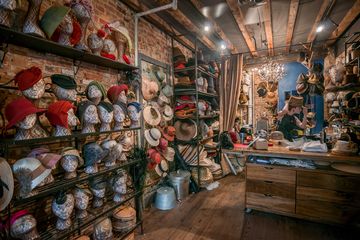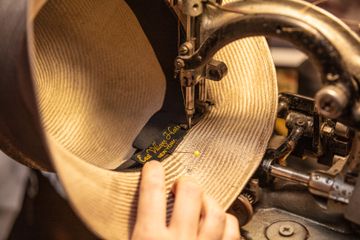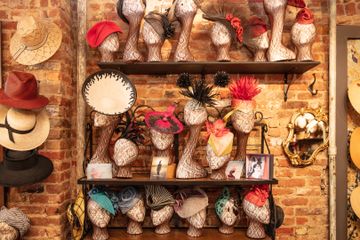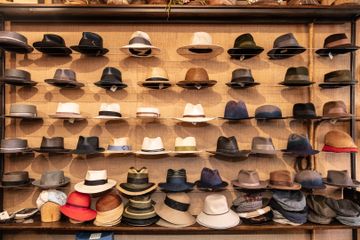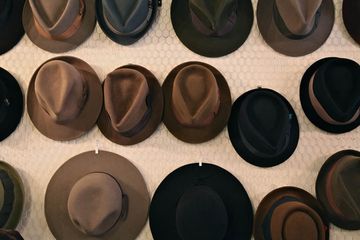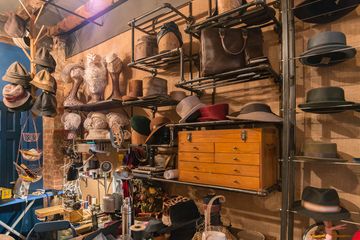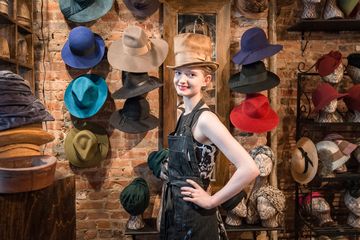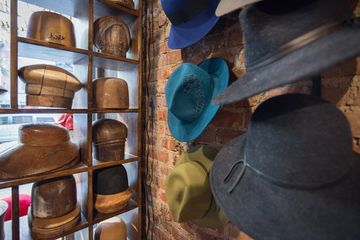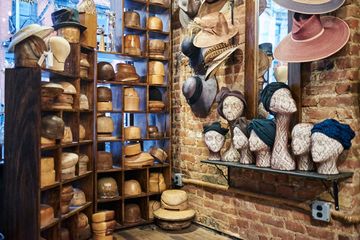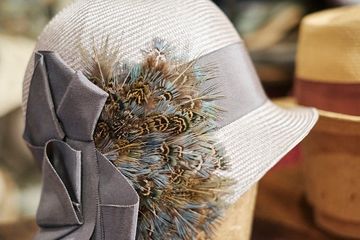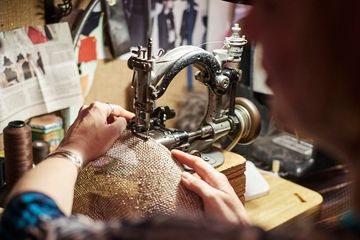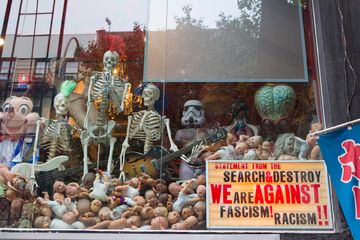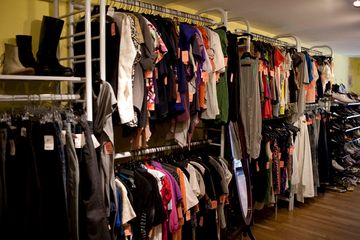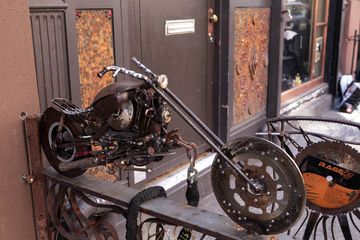
Looking out onto the street from inside the confines of the little storefront window, long necked silhouettes and busts wrapped in black lace stared at the ground. Amelia, a member of the Manhattan Sideways team, told me that she could almost imagine them glancing up from beneath the brims of their hats with a coy smile, could almost hear them whispering and enticing her to enter.
Originally from England, East Village Hats owner Julia Knox’s background is in clothing design and the English Language. Eight years ago, after living all over the world teaching English as a foreign language, she moved to New York to continue her work in fashion design. One day, however, she decided to take a millinery class and has been hooked on hats ever since.
Julia’s professor at the Fashion Institute of Technology (FIT) introduced her to Barbara Feinman, who had owned her shop since the late 1990s, but was looking to retire and pass the business along to somebody else. In 2011, Julia became that somebody. In 2016, the lease was up on the old shop, Barbara Feinman Millinery, so Julia made the move just a few doors down from the original storefront to her present location on East 7th, and renamed the shop East Village Hats. It was important to stay close to the original boutique, Julia explained, because “one block can be a million miles in New York.”
When Amelia inquired about how business was, Julia confidently replied, “They sell like hotcakes.” Amelia then paused with her questions as she observed Julia trimming a man’s fedora with a green and white striped ribbon. Julia then continued on, telling Amelia a bit about the hat making process. First, the hats are formed on wooden blocks. Then they are sewn with a 130 year-old sewing machine, which used to be operated by a treadle, but now has a motor for modern efficiency.
At that moment, an older woman walked in and began to look around. Julia asked her politely if she could help her find something, to which the woman replied in a soft Irish accent: “You have some lovely blocks here.” She pointed to the wooden hat molds lining the brick wall. Amelia listened as they began to discuss all manner of hat things...hats in the United Kingdom versus hats in the United States, the hats at the royal wedding of Kate and William, how Princess Diana rarely wore hats. It was wonderful for Amelia to simply observe and listen.
Later, Julia revealed to Amelia that she has been hosting hat making classes in her small shop. “This little workbench is the center of our universe,” she said, motioning to the bench in front of her, whose drawers seemed to be filled to the brim with lace and feathers and ribbons. She went on to say how the bench rolls out into the middle of the room to make the entire shop a classroom. These classes range from workshops on making fascinators, a dainty head piece she described as “decorative bits of nothing,” to more serious classes for people in the fashion business, to which she brings teachers from here and abroad to share their art. People do not necessarily need to have experience. “We spend three hours, we drink wine. It’s a lot of fun.”
The community interaction Julia has fostered is a feature specific to the new location; so, she said, is their restoration and repairs. Now, in addition to making custom-made and ready-to-wear hats with a modern minimalist aesthetic and touches of vintage, she often receives beautiful old hats whose owners are looking to restore them to their former glory. With a smile on her face, she told me about an old collapsible top hat that she was recently given. She describe how modern felts and materials are nothing like the fine, smooth felts with which old hats were made.
“Recently, I heard about some old felts just sitting in a warehouse in the Garment District.” Laughing a bit to herself, she added, “I went and cleaned them out!” Just then, an older man and his wife walked in to pick up the fedora that Julia had been trimming during our conversation. They walked up to the workbench with big smiles on their faces as Julia greeted them. She handed over the green and white trimmed straw hat to the man, who immediately put it on. “You look very smart,” she announced to him.
One might think that in the technological, mass-produced modern age, handmade hats would not be in fashion. However, this is simply not the case, according to Julia. She finds that people are becoming increasingly weary of “fast fashion.” They appreciate, instead, to see the kind of care that goes into the products made at East Village Hats and to meet the person who made them. Chains simply cannot offer the range of sizes that independent fashion businesses can. Nor can they provide the kind of custom work that Julia offers with her hats. “Hats are making a kind of renaissance, and I can stand by my product. It is designed to last a lifetime.”
